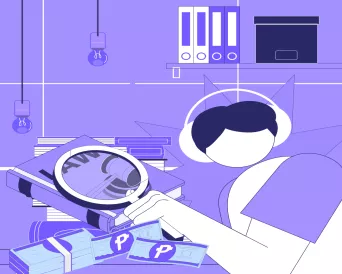Having debt hanging over your head can feel like carrying a backpack full of rocks on a hike up an enormous mountain. It’s heavy, it’s draining, and it sure doesn’t make the journey any easier. But here’s the good news, luv: with the right strategies, you can unload this burden and stride toward a lighter, debt-free future. So, let’s unpack these rocks one by one, shall we?
Table of Contents
Assessing Your Debt: Know What You Owe
Before you can tackle your debt, you need a clear picture of the battlefield. Here’s how to start:
- Create a Debt List: Write down every single debt you have—the creditor’s name, the total amount owed, the interest rate, and the minimum monthly payment. This includes everything from small credit card debts to big personal loans.
- Prioritize Your Debts: Understanding which debts have the highest interest rates and which ones are the smallest can help you decide on a repayment strategy that suits your financial situation.
- Review Your Budget: See where your money is going each month. This will help you figure out how much you can realistically dedicate to paying down your debt without compromising on your essential needs.

Debt Repayment Strategies: Pick Your Battle Plan
Snowball Method
Just like building a snowman, start with the smallest snowball and roll it up! Pay off your smallest debt first while keeping minimum payments on others. Each debt you clear adds momentum until you’re ready to tackle the biggest ones.
Avalanche Method
Prefer to silence the loudest roar first? Then the avalanche method might be for you. Target debts with the highest interest rates, knocking them out one by one. This way, you save more on interest over time, which can be a game changer.
Negotiating with Creditors: Time to Talk
Believe it or not, creditors are often willing to negotiate. It’s in everyone's interest to find a solution that keeps you solvent and able to pay. Here are some tips:
- Initiate the Conversation: Reach out before you fall behind on payments. Creditors are more likely to work with customers who are proactive.
- Express Willingness to Pay: Let them know you’re committed to paying your debt but need some modifications to make it feasible.
- Request Specific Adjustments: Lower interest rates, a longer repayment period, or a temporary reduction in payments can all make your debt more manageable.
Tools and Resources for Debt Management
You’re not in this alone, luv. There are tools and services out there designed to help you manage your debt. You can often enlist the help of the following to manage your debt:
- Debt Repayment Planners: Apps like Debt Payoff Planner and Undebt.it can help you organize and automate your repayment plan.
- Counseling Services: Non-profit credit counseling agencies offer free or low-cost services that can provide personalized advice, help you manage your budget, and even facilitate debt management https://tonikbank.com/blog/journey-financial-wellness-financial-planning-guide with your creditors.
Some Debts are Better than Others
A debt-free life sounds like paradise. You get more freedom, more peace of mind, and more opportunities to enjoy the things you love. However, we want to make one thing clear: debts aren’t all that bad, especially they help you build credit!
A good example is Tonik Credit Builder Loan, which helps you build a strong credit history, leading to more financial opportunities. Loan amounts range from ₱5,000 to ₱20,000, making it easily manageable even to first-time borrowers. And, if you think you can’t apply because you’re self-employed, think again – both employed and self-employed individuals can apply.
Download the Tonik App and apply today!



